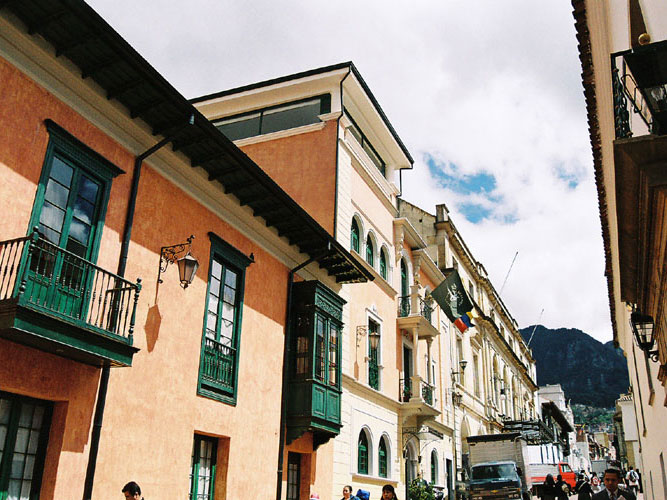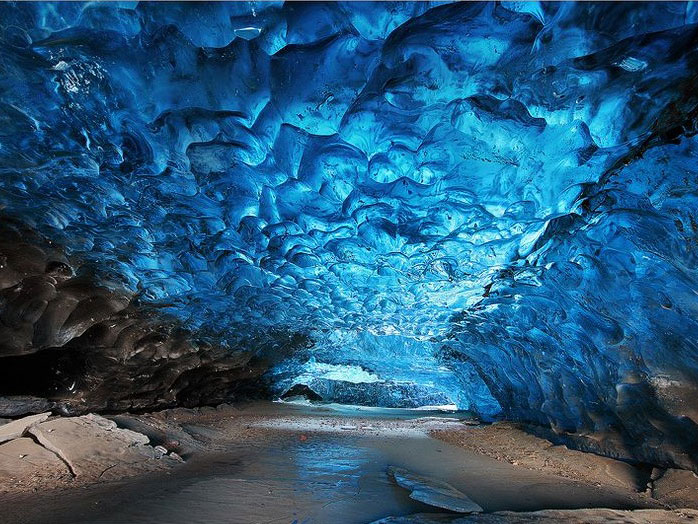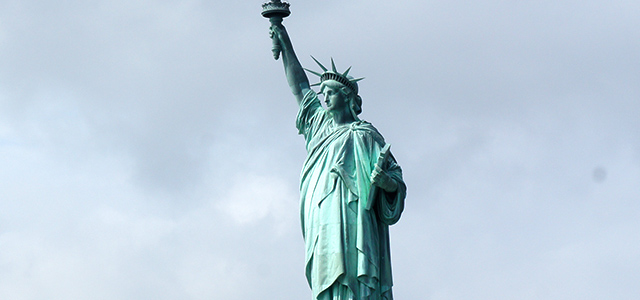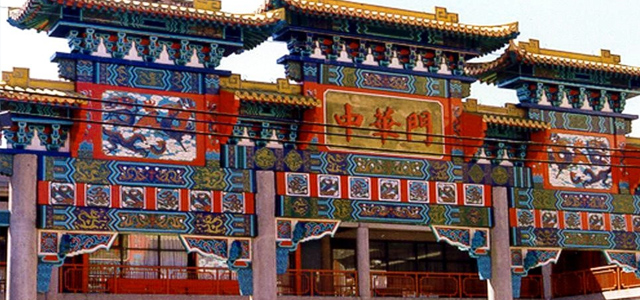
Top Chinatowns Around the World
My dad once told me that Chinese are everywhere. I scoffed. His reason was that the Chinese are a hardworking bunch. Where there is opportunity, there are Chinese. The Chinese would travel across continents if they heard there was a better life out there for them- to earn a living, or to make their mark. While I didn’t believe him before, my adventures to different countries changed my mind.
I’ve learned that Chinatowns are everywhere, no doubt evidence of how the Chinese have penetrated all corners of the world . Some Chinatowns may be huge, some are just one tiny street, some kinda resemble ghettos while some feature iconic structures adorn with ornate designs. But while they may all look very different, oddly enough, there are certain features that collectively define them. At the start of every Chinatown, there are the familiar red arch entrances that greet you. At every other street corner, you can find a dim sum (yum cha) restaurant. As you wander along the shops, you are bound to come across a barbecue deli (siu laap) noodle house, with roast duck or chicken hanging on display. Most importantly, wherever you walk, there will always be smatterings of Cantonese being heard.
There are countless of them dotted around the world, and which are worth visiting? I made a list of four that I think should be at the top of the Chinatowns Around the World.
San Francisco- Arguably the most famous Chinatown in the world
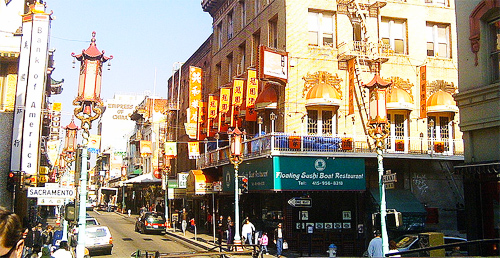
The Chinatown in San Francisco is one of the biggest Chinatowns in the western world. It covers about eight blocks and occupies two main streets, Grant and Stockton, right in the heart of the city. It has a grand entrance, with stone arches supporting a green-tiled roof that has dragon carvings on top.
One of the more popular features of the San Francisco Chinatown is its Fortune Cookie Factory. Since 1962, the Golden Gate Fortune Cookie Factory has been supplying fortune cookies to Chinatowns around the world. Inside this rather shabby looking mini factory, you can catch the fortune cookie production right in front of you.
During each Chinese New Year period there is the San Francisco Chinese New Year Festival and Parade and is the biggest celebration of its kind outside of Asia. The parade was started in the 1860s, organized by the Chinese Chamber of Commerce. The parade displays a wide array of magnificent floats, exploding firecrackers, school marching bands, stilt walkers, lion dancers and more. One of the main highlights is the Golden Dragon, over 200 feet long, divided into 29 segments and requires a team of 100 people to carry it. It’s usually left to the very end of the parade, as a grand finale.
London- A once shabby street is now part of the heart of London
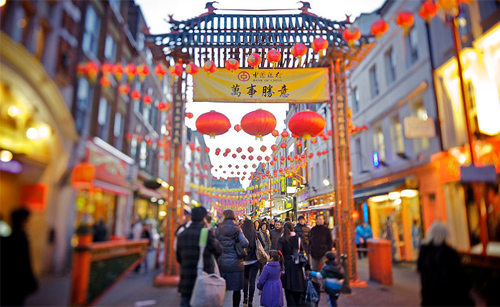
London’s Chinatown can be found between Shaftesbury and Leicester Square. In the 1950s it was all but a shabby street where rents were cheap and property prices low, which attracted Chinese immigrants to settle here. These immigrants formed communities and have remained ever since. Today, London’s Chinatown is brimming with Asian restaurants, mostly Cantonese and Szechaun, and a number of supermarkets, selling exotic Asian cooking ingredients.
The entrance is a modest red arch with Chinese carvings, supporting a typical green-tiled roof. Pagodas line the beginning and end of the street. One unique feature found are the replica pagoda roofs on top of the famous English phone boxes – a fusion of East meets West.
During the Chinese New Year period, London’s Chinatown lights up to celebrate the arrival of the new lunar year with traditional dragon dances and parties held in the streets.
Sydney- Savour the delights of Sydney’s Chinatown
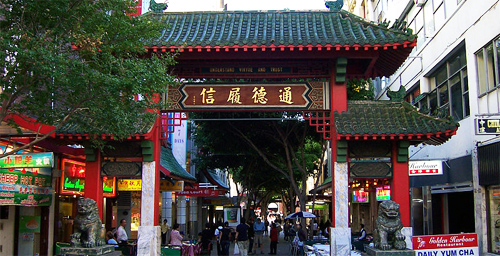
The Sydney Chinatown, covering 13 streets, is Australia’s most reputable Chinatown, accompanied with a wealth of history.
Today, Sydney’s Chinatown is a mix of Asian culture, shopping and cuisine. The entire area has a distinct oriental feel to it, from its architecture and decorations.
The Chinatown here is a colourful mixture of Asian culture, shopping and cuisine. The area’s distinctly oriental architecture, street lanterns and archways make it a showpiece for Australian Chinese culture. At the start of the Chinatown is a gigantic archway, with four Chinese characters, which translates to “The Four Seas are your Home”.
There are a myriad of Chinese eateries serving authentic Chinese dishes. An important thing to take note of is that the opening hours in these restaurants are long, some even up till four in the morning. Most of these restaurants lack a bit of ambience and atmosphere, but all serve reasonably delicious food at reasonable prices. No matter if it’s Peking Duck, Barbecued Pork, or Dim Sum that you’re craving for, you can find it in this crammed, but self-sufficient Chinatown.
The Chinese in Sydney’s Chinatown celebrate Chinese festivals with the typical fare, like having lion dances and playing with firecrackers.
Yokohama- Come for a walk around Japan’s biggest Chinatown
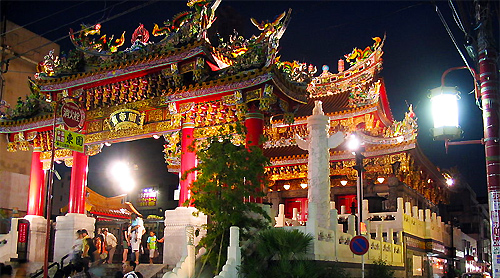
Japan has three Chinatowns and Yokohama is home of the biggest, located right in the city centre. It started to grow in the late 1850s and became the residence of the Chinese traders who flocked to the Yokohama port for trading.
Today, the Yokohama Chinatown is not so much of a residential area than it is a recreational and tourism venue with strings of Chinese stores along its narrow streets.
The unique feature of this Chinatown its four entrances. Flanked by four colourful gates, all splashed with vibrant colours, each covered with a spectacularly designed roof, they add a certain grandeur to the place. Each gate represents a different season and element, hence it’s a different color, and is dedicated to a different god for protection of the area. For example, the west gate has bright colours on a white base, which is supposed to bring peace to the neighbourhood.
One of the highlights of the Yokohama Chinatown is the Kaniteibyo, a temple found in the centre. This historic temple was built in 1873 by Chinese residents to dedicate to the Chinese god of good business and prosperity.
A food theme park, called the Daska, was added to the Yokohama Chinatown not too long ago, modelled after the 1920s Shanghai. It has three floors of food stands operated by renowned restaurants from China and Japan, selling mainly Chinese delicacies.
Have you been to any Chinatown and think they deserve to be on the top?
